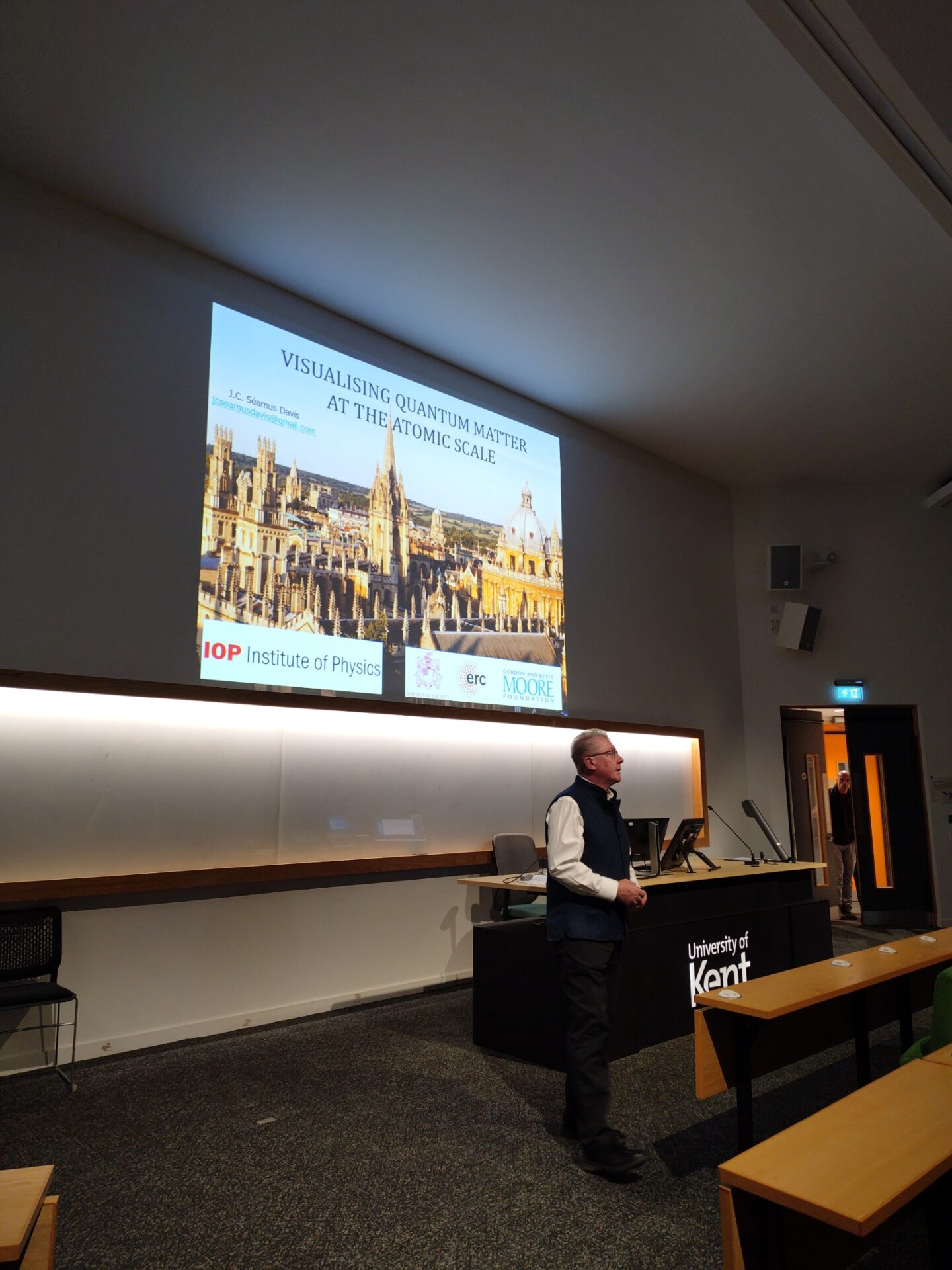
Contributed by Parmida Abdollahi, Stage 3 UG Physics student.
On Tuesday 7th of October 2025, the University of Kent welcomed Professor J. C. Seamus Davis from the University of Oxford and the University of Cork, who gave a talk on the work him and his team have been doing on macroscopic quantum matter. The talk was attended by a wonderful mix of students and general public, with about 45 people in attendance.
In this lecture, Professor Davis discussed how quantum matter visualization can affect fundamental physics research, as well as development of new technologies. His team designed a series of experiment, with the purpose of mapping out the visual field of different materials, using a very thin needle with only one atom at the end.
The data gathered from different materials were used to produce images, showing the measurements of energy against a voltage in the system. This process was repeated with different potential differences, and all the images were put together to produce a movie for each material. However, these movies were not very useful as they could not give us much information about the properties of the materials. This problem was solved by taking the Fourier transform of the data and making new movies with them. The new movies, which are more interesting and beautiful, could tell us about the quantum states, and the properties of each material. For instance, if we apply this method to a completely unknown material, we would be able to understand its properties, just from the movie produced for the material.
By being able to image electronic quantum phenomena at the atomic scale, using superconducting materials, we are able to visualize electronic quantum phenomena and new states of quantum matter directly, as well as to find that previously unseen forms of quantum matter, and high temperature superconductors are closely related. These results are important for building quantum computers and making new technologies, especially given that quantum computers will be used to tackle the world’s biggest problems. Such problems include predicting the climate, logistics, data security, and national security concerns that classical computers are not suitable for solving.
We now look forward to the next talk on the Kent Physics Centre series on “How to shrink your microscope” by Dr Michael Hughes from the University of Kent, on 11th of November 2025 at 6:30pm.